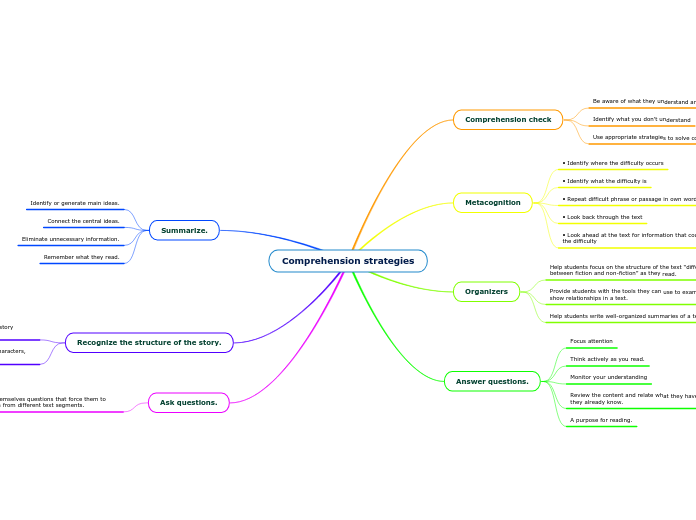Comprehension strategies
Comprehension check
Be aware of what they understand and what they don't.
Identify what you don't understand
Use appropriate strategies to solve comprehension problems
Metacognition
• Identify where the difficulty occurs
• Identify what the difficulty is
• Repeat difficult phrase or passage in own words
• Look back through the text
• Look ahead at the text for information that could help solve the difficulty
Organizers
Help students focus on the structure of the text “differences between fiction and non-fiction” as they read.
Provide students with the tools they can use to examine and show relationships in a text.
Help students write well-organized summaries of a text.
Answer questions.
Focus attention
Think actively as you read.
Monitor your understanding
Review the content and relate what they have learned to what they already know.
A purpose for reading.
Summarize.
Identify or generate main ideas.
Connect the central ideas.
Eliminate unnecessary information.
Remember what they read.
Recognize the structure of the story.
They often learn to recognize the structure of the story through the use of story maps.
They learn to identify the categories of content (characters, setting, events, problems, solution).
Ask questions.
They learn to ask themselves questions that force them to combine information from different text segments.
